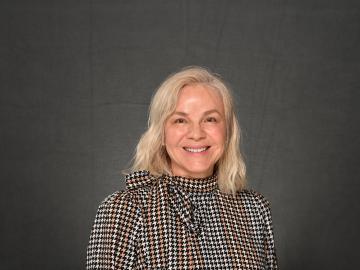Filter News
Area of Research
- (-) Fossil Energy (1)
- (-) Fusion and Fission (11)
- (-) Supercomputing (50)
- Advanced Manufacturing (16)
- Biological Systems (2)
- Biology and Environment (76)
- Building Technologies (7)
- Chemical and Engineering Materials (1)
- Chemistry and Physics at Interfaces (1)
- Clean Energy (230)
- Climate and Environmental Systems (4)
- Computational Biology (1)
- Computational Engineering (2)
- Computer Science (10)
- Data (1)
- Electricity and Smart Grid (1)
- Energy Frontier Research Centers (1)
- Energy Sciences (2)
- Functional Materials for Energy (1)
- Fusion Energy (8)
- Isotope Development and Production (2)
- Isotopes (14)
- Materials (109)
- Materials for Computing (10)
- Materials Synthesis from Atoms to Systems (1)
- Materials Under Extremes (1)
- Mathematics (1)
- National Security (24)
- Neutron Data Analysis and Visualization (2)
- Neutron Science (43)
- Nuclear Science and Technology (23)
- Nuclear Systems Modeling, Simulation and Validation (2)
- Quantum information Science (3)
- Renewable Energy (3)
- Sensors and Controls (3)
- Transportation Systems (2)
News Type
News Topics
- Advanced Reactors (2)
- Artificial Intelligence (1)
- Big Data (5)
- Biology (1)
- Biomedical (5)
- Chemical Sciences (2)
- Climate Change (4)
- Computer Science (19)
- Coronavirus (2)
- Critical Materials (4)
- Energy Storage (2)
- Environment (6)
- Exascale Computing (2)
- Frontier (2)
- Fusion (6)
- High-Performance Computing (6)
- Isotopes (1)
- ITER (3)
- Machine Learning (1)
- Materials (2)
- Materials Science (1)
- Nanotechnology (1)
- Nuclear Energy (5)
- Physics (1)
- Polymers (2)
- Quantum Computing (4)
- Quantum Science (3)
- Simulation (2)
- Space Exploration (1)
- Summit (6)
- Sustainable Energy (1)
- Transportation (2)
Media Contacts


Hilda Klasky, a research scientist in ORNL’s Computing and Computational Sciences Directorate, has been named a fellow of the American Medical Informatics Association.

Researchers from Oak Ridge National Laboratory and Northeastern University modeled how extreme conditions in a changing climate affect the land’s ability to absorb atmospheric carbon — a key process for mitigating human-caused emissions. They found that 88% of Earth’s regions could become carbon emitters by the end of the 21st century.

An advance in a topological insulator material — whose interior behaves like an electrical insulator but whose surface behaves like a conductor — could revolutionize the fields of next-generation electronics and quantum computing, according to scientists at ORNL.

At the National Center for Computational Sciences, Ashley Barker enjoys one of the least complicated–sounding job titles at ORNL: section head of operations. But within that seemingly ordinary designation lurks a multitude of demanding roles as she oversees the complete user experience for NCCS computer systems.

A study led by Oak Ridge National Laboratory researchers identifies a new potential application in quantum computing that could be part of the next computational revolution.

ORNL scientists combined two ligands, or metal-binding molecules, to target light and heavy lanthanides simultaneously for exceptionally efficient separation.

When virtually unlimited energy from fusion becomes a reality on Earth, Phil Snyder and his team will have had a hand in making it happen.

A study by Oak Ridge National Laboratory researchers has demonstrated how satellites could enable more efficient, secure quantum networks.

Critical Materials Institute researchers at Oak Ridge National Laboratory and Arizona State University studied the mineral monazite, an important source of rare-earth elements, to enhance methods of recovering critical materials for energy, defense and manufacturing applications.




